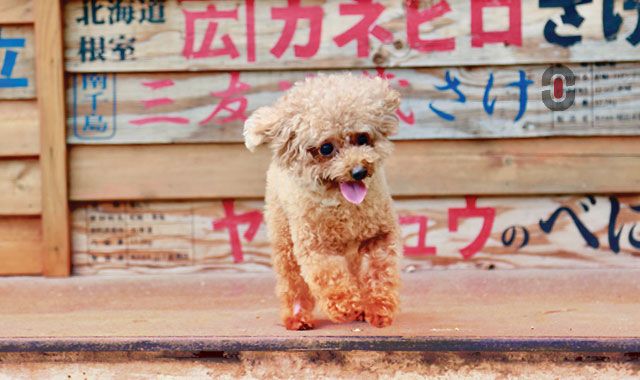Global borders continue to shrink and this is becoming ever more evident when it comes to English to Japanese translations. Many Western companies are heading to Japan to offer their products there – including games, technology, and other wares. But with this comes many challenges related to localization. Whether you need to translate English to Japanese or translate Japanese to English, a couple of important localization points need to be kept top of mind on your expansion journey. Let’s take a look at some of these.
What Makes English To Japanese Translation So Difficult?
English to Japanese translations come with a number of different challenges related to both the language and alphabets of both societies, as well as culture and formality levels and more. Here, we take a look at some of these challenges that a Japanese translator would need to consider.
- Vocabulary: the Japanese language isn’t only comprised of words of Japanese origin. In fact, there are many borrowed words from both Chinese and English, and as a result, these words and their meanings within a cultural context need to be taken into consideration by a Japanese translator
- Grammar: sentence structure in English and Japanese differs vastly, too. For instance, English grammatical rules place the order in terms of subject-verb-object. However, in Japanese, you find that the sentence order is subject-object-verb. This would mean that the sentence “I am eating an apple” in English would be directly translated into “I am an apple-eating” in Japanese. Although it sounds odd, this is the Japanese grammatical rule that needs to be followed. What’s more, is that the subject of the sentence determines the verb.
- Honorifics and formality levels: Japanese culture, and accordingly the language, is full of honorifics and formality levels depending on one’s standing in society, the age of the person that you’re addressing, and their relative position to you. What makes this even more complicated is that formality levels can change verbs, adjectives, and nouns depending on their usage. This is why there is no single direct translation from English to Japanese of the word “hello”. In Japanese, you’d need to look at the time of day, the social standing of the person being addressed, and the levels of politeness required.
- Typography: if that doesn’t make localization complicated, this part should. Japanese uses three different types of scripts including Kanji, Hiragana, and Katakana. Although there are rules about when to use each one, there are numerous exceptions to these rules making for a more complex translation and localization landscape. In addition to this, Japanese characters can be written both horizontally and vertically. Horizontal text is read from left to right, much like English. However, vertical text is read from top to bottom but is read from right to left.
Quirky Japanese Website Design
Taking all this into account, a Western user of a Japanese website might find the user experience (UX) on such websites quite overwhelming. A standard, well-performing Japanese website would, for example, be full of multiple banners (both horizontal and vertical), be packed with text, and have numerous pictures. To Western sensibilities, this may go against the grain of the minimalist designs that Japanese culture is typically associated with. However, if one delves a bit further into the culture, the entire website design in Japanese makes perfect sense. Here’s why.
Firstly, it’s important to look at the demographics of Japanese website users. While millennials are on the rise, they do not appear to have the same purchasing power as more elderly citizens over the age of 60, who have both the funds and the time to shop. These citizens need text to be written in at least a size 16 font, require as much information on one page without having to follow links (much like the West does), and also, they are sometimes not aware that they can scroll down on the page. This means that Japanese website design is usually text-heavy and content-rich. The purpose behind this is to ensure that the target audiences that these websites cater to are actually valuable to them.
Another reason behind the apparent complexity and density of information on Japanese sites is the fact that many are targeted at men as the decision-makers of households. As a result, men in Japan appear to prefer text that is informative and which does not only specify the unique selling points (USPs) of a product but also looks at how it was manufactured and the technical specifications that comprise it. These are just some of the factors to consider when looking to conduct English to Japanese translation and localization for websites.
Other Challenges With English to Japanese Localization
 If you thought that this is where the end of the challenges is, you’d be wrong. There are a number of other factors to consider when doing English to Japanese translation and localization.
If you thought that this is where the end of the challenges is, you’d be wrong. There are a number of other factors to consider when doing English to Japanese translation and localization.
For starters, it’s almost impossible to undertake a literal translation of text from English to Japanese. As a result, localization experts need to keep this in mind to ensure that their texts are as accurate as possible given the local cultures and customs of Japanese society.
Further to this, translation tools lack resources regarding the Japanese language. This is why a Japanese translator can have a hard time translating words, phrases, sentences and even entire scripts of dialogue (whether for games or for websites) if they don’t have a strong enough resource toolkit. Using tools that have been created specifically for Japanese, therefore, should be used to help make the English to Japanese localization process as accurate and meaningful as possible.
Finally, it’s critical in English to Japanese localization to ensure that one remains culturally sensitive to aspects like honorifics. The omission of these or non-uniform usage of honorifics such as “Ms. Saiko” or “Saiko-san” can create frustration on the part of the users and therefore lead to less satisfaction with the final product, leading to poor or negative reviews and ultimately loss of business reputation and loss of face. The latter is a huge cultural no-no and must be taken into account quite seriously if a Western business wishes to be successful in Japan.
English to Japanese localization: Quirks can be overcome
Irrespective of whether you as a Western business are seeking to offer games or products to your target audience, the linguistic quirks that arise as a result of English to Japanese localization can, in fact, be overcome. This will mean selecting and working with professional language service providers (LSP) who are not only native speakers but who are also close to the local culture. Cultural sensitivity and awareness have never been more important now and as a result, it’s crucial to ensure you partner with the right LSP to ensure your product takes off in Japan, despite the plethora of linguistic and cultural nuances and challenges mentioned above.
